In the last quarter-final of the DFB Pokal 2019/20, Eintracht Frankfurt welcomed Werder Bremen. Whereas Werder Bremen under Florian Kohfeldt are currently struggling in the Bundesliga, Eintracht Frankfurt found their form again in 2020 after a short low in the first half of the season.
With both sides playing in a cautious way mainly aiming at disrupting the opposition attacks in the first half, the game turned into a slightly faster game with more promising transition moments on both sides in the second half. One reason for that was a penalty rewarded for Frankfurt due to a handball offence leading to Frankfurt’s leading goal just before half-time. In the end, Frankfurt won the game with a further goal in the second half.
This tactical analysis will take a closer look at the tactics of either side and will attempt to explain why Eintracht Frankfurt held the upper hand in the end. In particular, in our analysis, we examine Frankfurt’s flexible build-up phase as well as the battle of rest defences in the second half.
Lineups and formations
Eintracht Frankfurt lined up in a 4-2-3-1 formation with a double pivot consisting of Djibril Sow and Stefan Ilsanker. Currently, high-flying Daichi Kamada acted as a central attacking midfielder in front of the double pivot and behind striker André Silva. Meanwhile, Filip Kostić and Timothy Chandler were tasked to attack down the flanks and send in crosses.
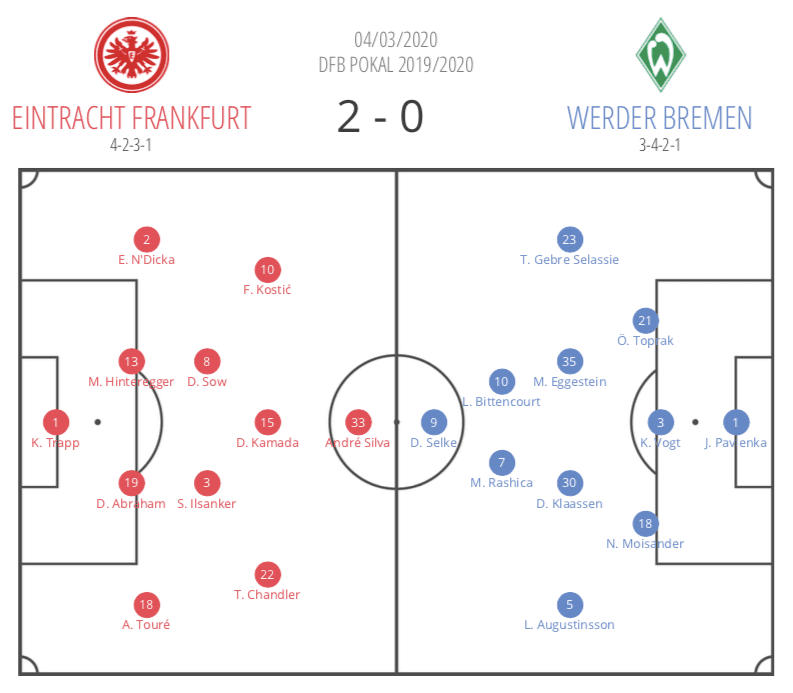
Kohfeldt, on the other hand, lined his side up in a 3-4-2-1 formation turning into a narrow 4-3-3 when attacking. Therefore, central defender Kevin Vogt moved forward into midfield when Bremen were in possession. Bremen’s attacking department consisted of striker Davie Selke and two half-space attackers in Milot Rashica and Leonardo Bittencourt.
Eintracht Frankfurt’s flexible 4-2-3-1 build-up
In the first half of the game, Eintracht Frankfurt’s build-up posed some problems for Werder Bremen’s pressing. Hütter’s side constantly switched between back four and back three during the build-up which made it difficult for Werder to out pressure on the ball-carrier.
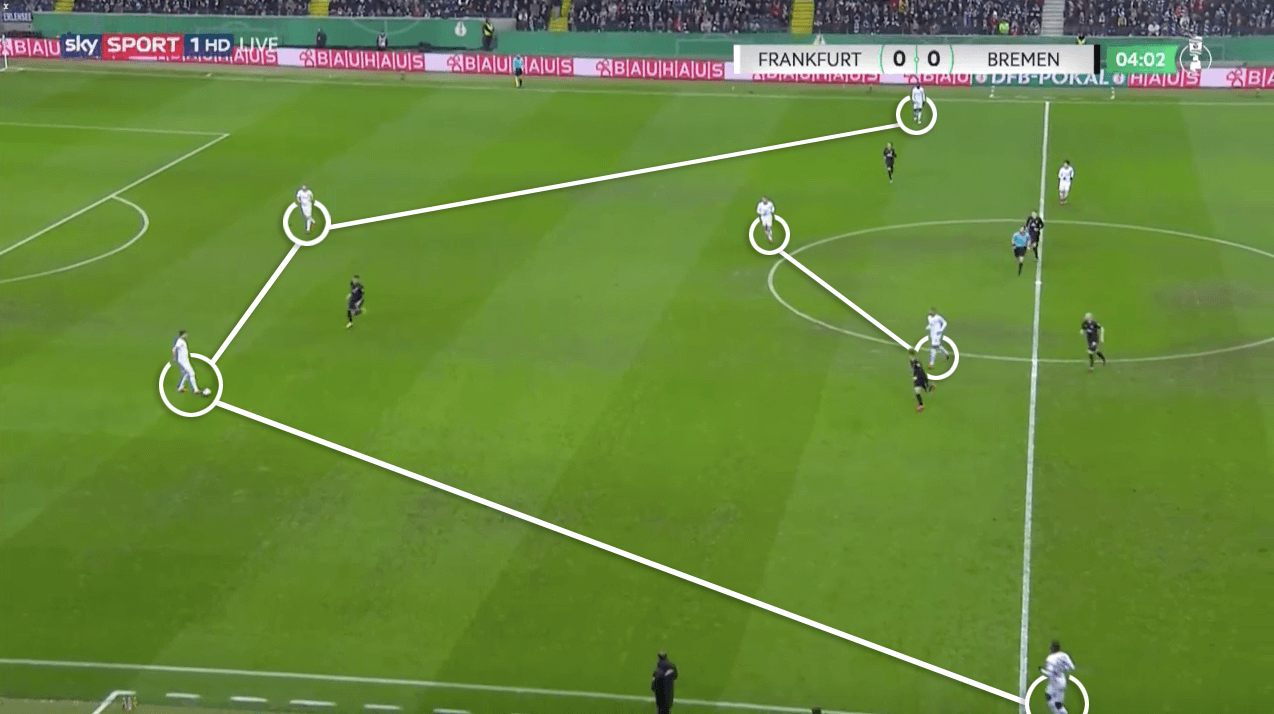
The back four build-up shape horizontally stretched Werder’s front three. Since Frankfurt’s full-backs received the ball in deeper areas, Werder’s wide forwards pressed as the way for the wing-back to move out was too long. That made it impossible for them to cover both of Frankfurt’s double pivot. Furthermore, Werder striker Selke was left alone to press both central defenders.
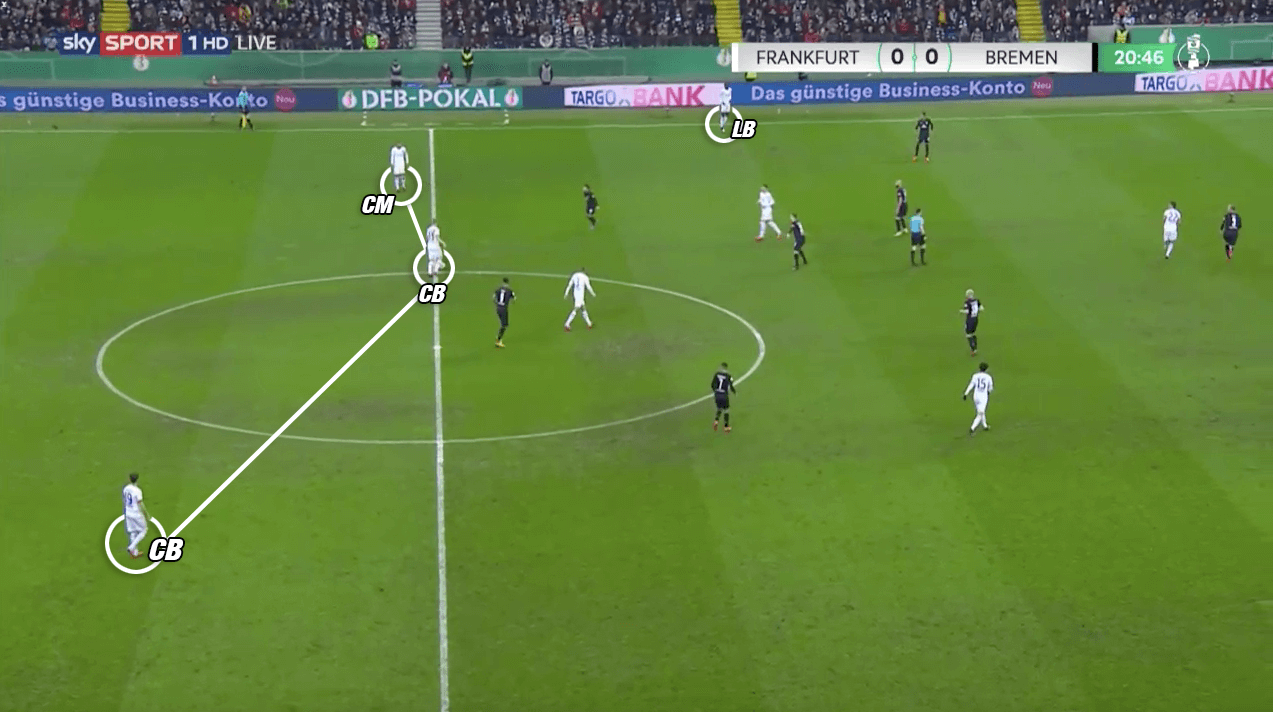
When either of Frankfurt built up with a situational back three, Frankfurt’s full-backs moved higher and occupied the opposition wing-backs. Frankfurt’s build-up players then utilised the free space in the full-back area either with a midfielder diagonally dropping or a centre-back moving wider.
Moreover, with Sow often moving up within the right half-space, Frankfurt’s main build-up side was the right where Frankfurt regularly created overloads. Whenever defensive midfielder Ilsanker moved between the central defenders, the centre-backs would push wider. This led to the dilemma for Werder’s wide attackers that they were confronted with Frankfurt’s centre-back and full-back on their side.
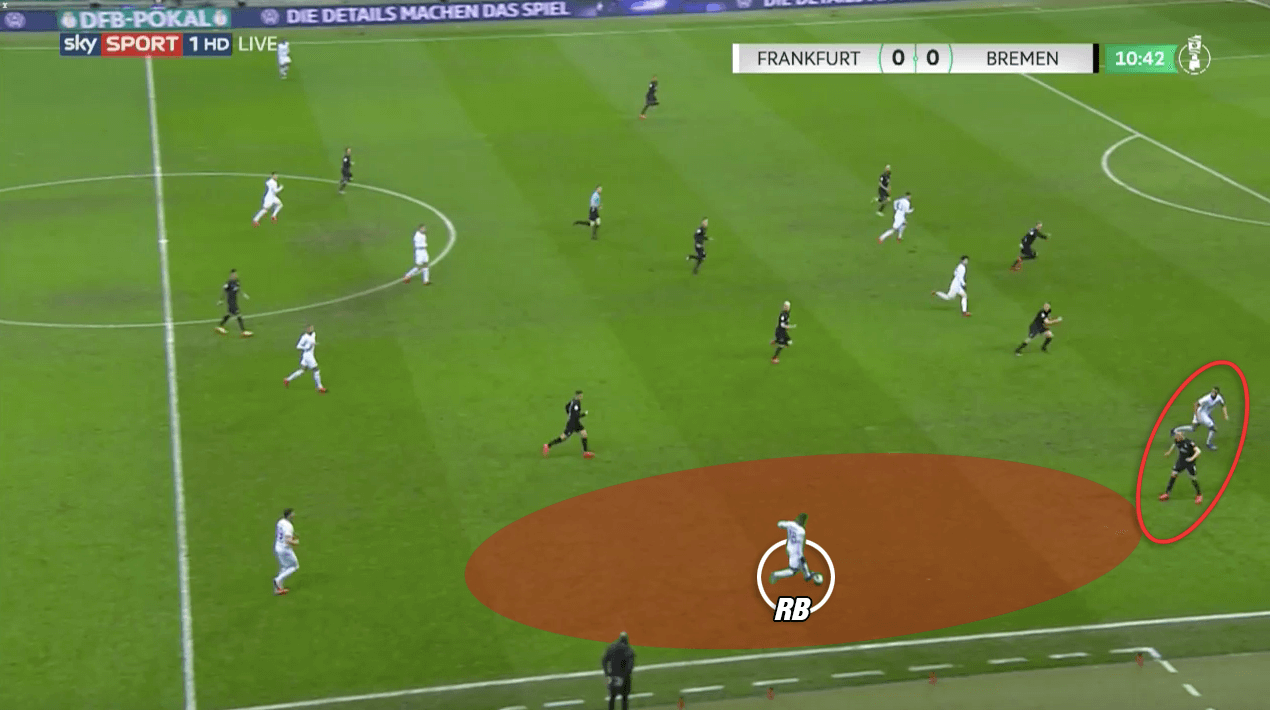
And, in some moments, Frankfurt could often progress up the pitch on the flanks with Werder Bremen’s ball near wing-back occupied by Frankfurt’s winger and therewith unable to step out.
Whenever Werder’s ball near wing-back could step out though as the four other players of Werder’s back line shifted through, Bremen could prevent Frankfurt from cleanly progressing up the pitch.
Once having progressed up into Bremen’s half, Hütter’s side often played deep passes or crosses very early which resulted in outnumbered situations against Werder Bremen’s back-five. Therefore, their offensive output in the first half remained relatively low.
Werder Bremen’s attacking approach
With Vogt moving from his central defender position into a single pivot position, Werder created a 4-3-3 shape in possession. The wingers, however, were positioned very narrow while the full-backs provided width by staying near the sideline.
Eintracht Frankfurt’s 4-2-3-1 allowed the home-side to mirror the opposition shape within the opposition half and press them high up the pitch in a man-oriented manner. Whenever Hütter’s side pressed aggressively and man-to-man, Werder attempted to utilise chipped balls to their full-backs to bypass Frankfurt’s pressing.
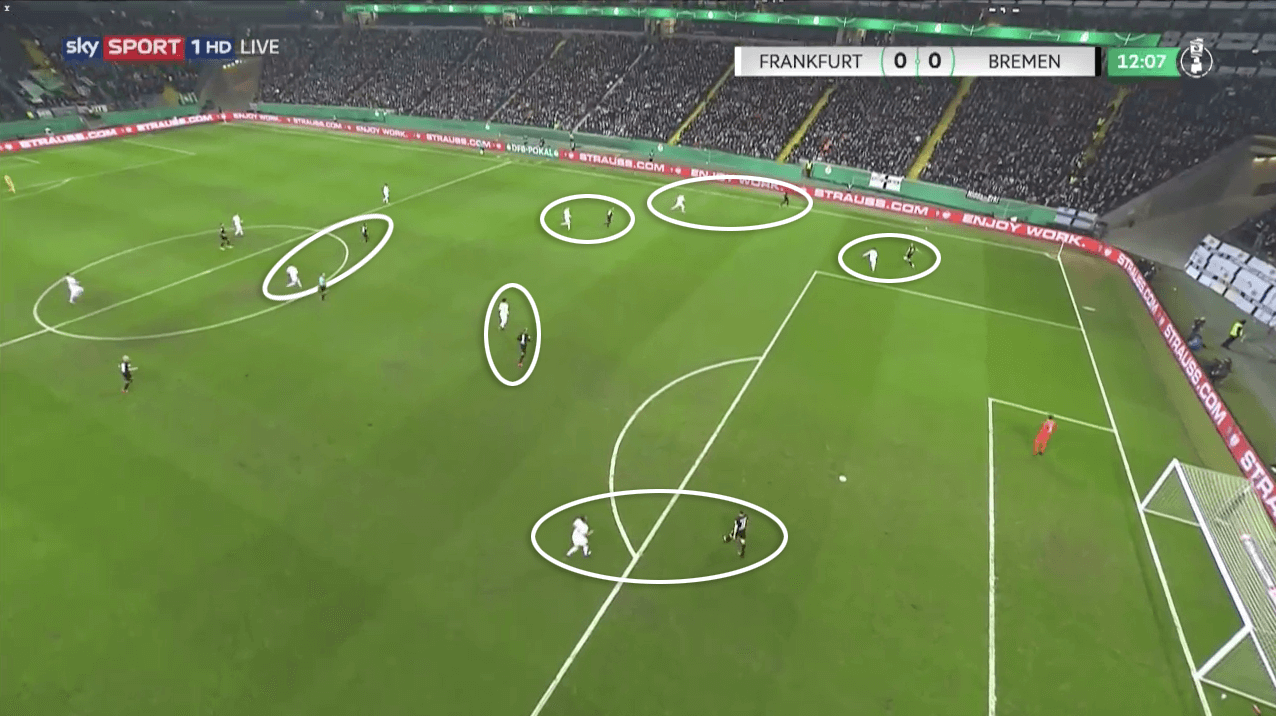
When Bremen entered Frankfurt’s half, Frankfurt’s compact and disciplined 4-2-3-1 block was tough to break through and with Bremen’s full-backs as their only wide players positioned rather deep, Frankfurt’s wingers could easily defend the wide areas. This allowed their own back four to remain narrow and create a 4v3 against Werder’s attacking trio at the back.
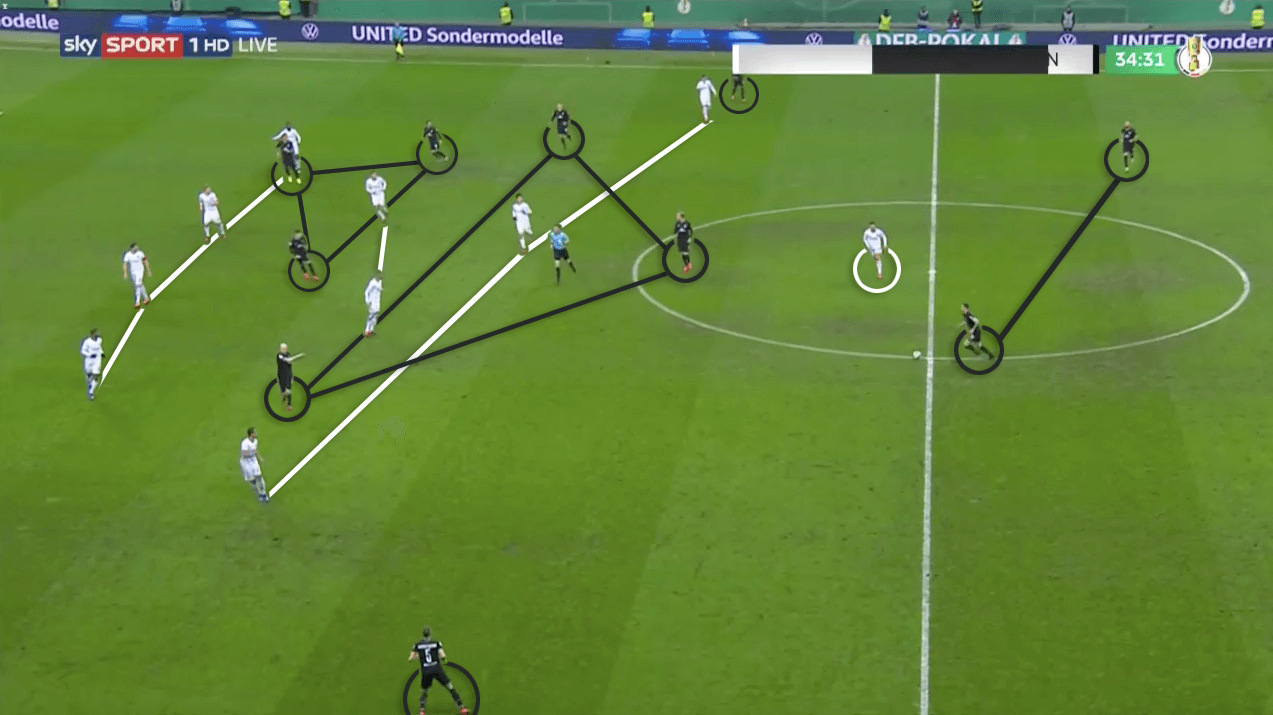
Werder’s main idea was to diagonally play into the space next to Frankfurt’s double pivot. Especially the ball far space between Frankfurt’s winger and full-back offered the potential to be exploited with quick switches of play.
Eintracht Frankfurt win battle of rest defences
In the second half, Werder Bremen had to slightly change their approach due to Frankfurt’s lead. This can be seen in the average formation line increasing as the game wore on. As displayed below, Werder’s average formation line of increased in the second half.
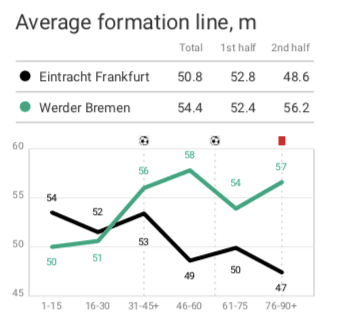
As a result, Frankfurt were offered more space within Werder Bremen’s half. Nevertheless, Werder Bremen’s rest defence structure remained numerically solid. With a numerical advantage at the back in defensive transition moments for Bremen, Frankfurt’s counter-attacking opportunities did not seem too dangerous. However, the game showed how a numerical advantage can be outweighed by a positional advantage in the case of Frankfurt’s second goal of the night.
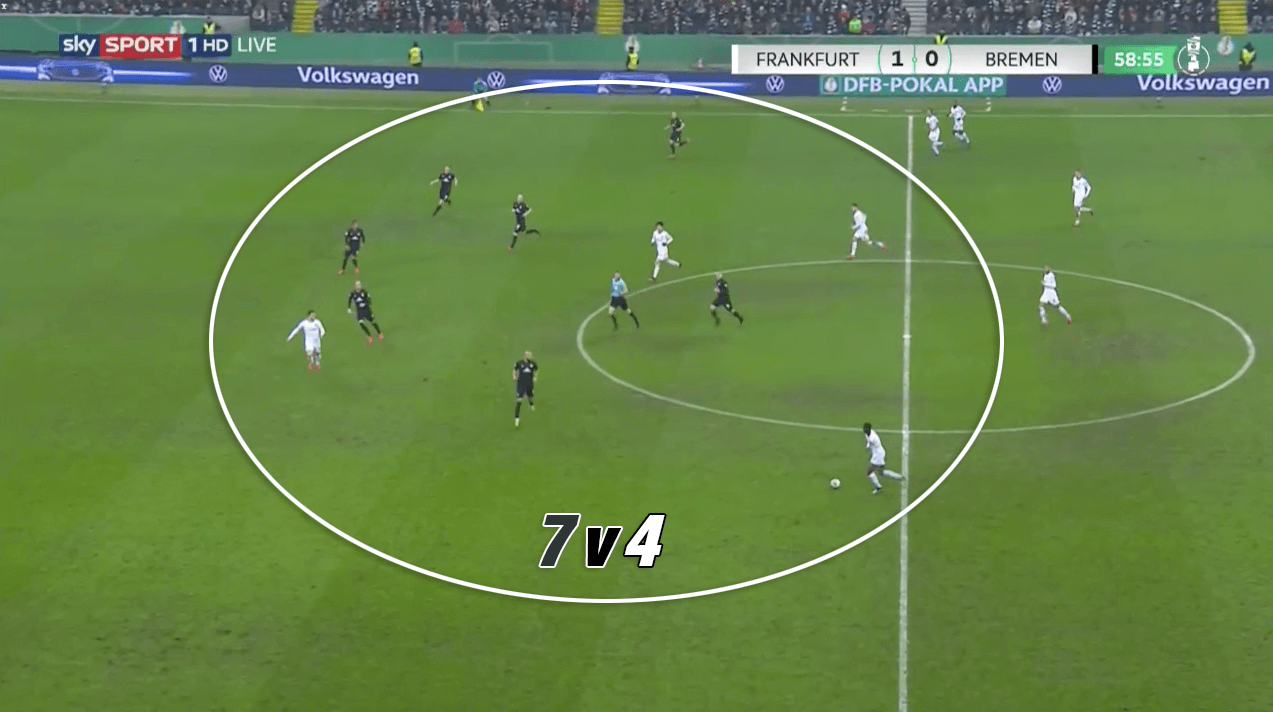
Despite the numerical advantage, Werder’s organisation offered a gap and the marking was not tight enough. As a consequence, Frankfurt were able to score a relatively simple second goal.
On the other side of the pitch, Bremen could occasionally create promising opportunities. But Frankfurt’s defensive department demonstrated Werder Bremen how to defend in situations with equal numbers at the back.
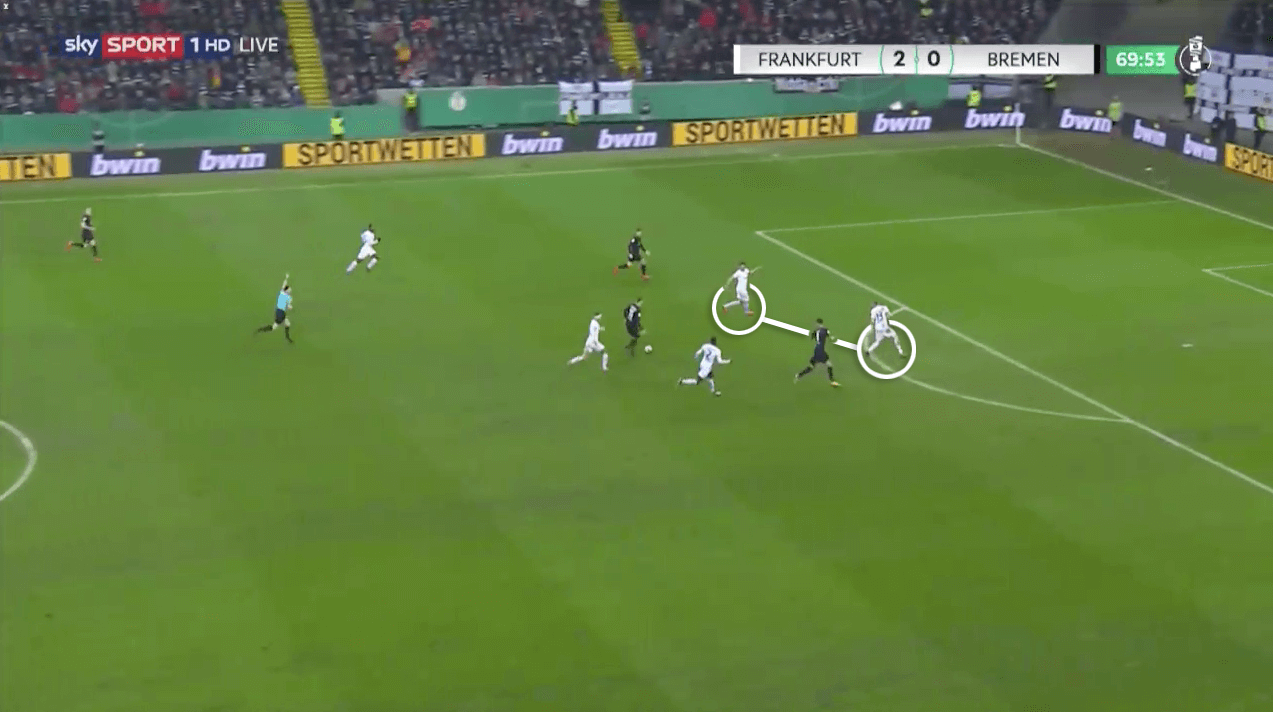
Despite all of Bremen’s offensive efforts, Frankfurt’s defensive performance was solid enough to prevent too many high-value chances. That can also be seen when taking a look at the opportunities and xGs created throughout the game.
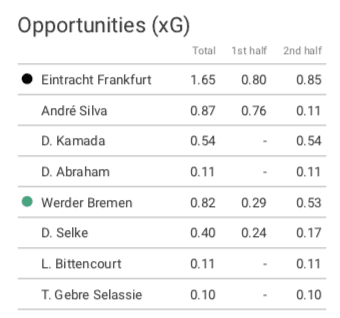
Conclusion
All in all, Eintracht Frankfurt were capable of winning a tight game which lacked goal chances in the first half and was vitalised by Frankfurt’s leading goal.
Werder Bremen were a bit unlucky since they showed a solid defensive performance in the fist half and only went 1-0 down due to the penalty.
Frankfurt, on the other hand, will be happy with this win. They will hope to use this momentum that took them far in last year’s Bundesliga that had them close to both Bayern Munich and Borussia Dortmund. Their flexible build-up play was a positive aspect, they struggled to create chances from positional attacks as their approach seemed to be a bit too one-dimensional with early crosses. But with some further improvement of their positional attacks, Frankfurt might well reach the DFB Pokal 2019/20 final.





Comments